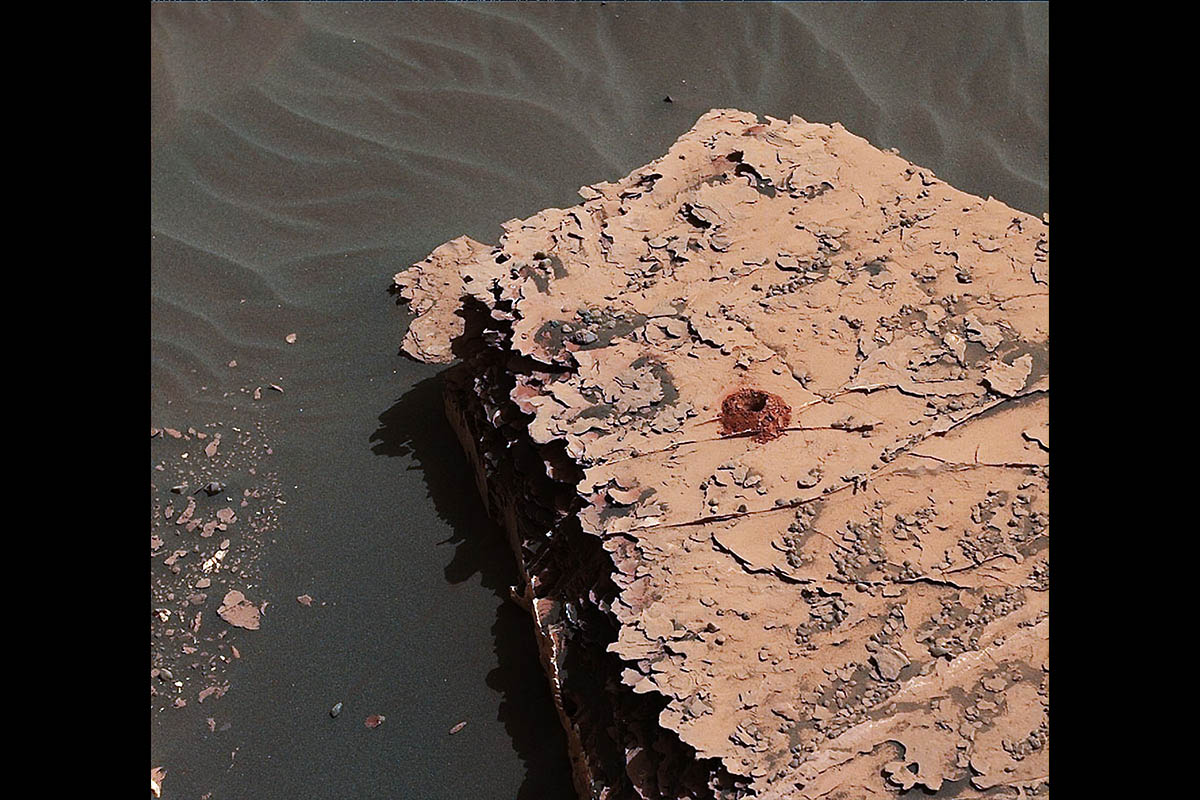NASA’s Curiosity rover successfully drilled a 2-inch-deep hole in a target called “Duluth” on May 20. It was the first rock sample captured by the drill since October 2016. This image was taken by Curiosity’s Mast Camera (Mastcam) on Sol 2057. It has been white balanced and contrast-enhanced. (NASA/JPL-Caltech/MSSS)
Home NASA’s Curiosity rover successfully drilled a 2-inch-deep hole in a target called “Duluth” on May 20. It was the first rock sample captured by the drill since October 2016. This image was taken by Curiosity’s Mast Camera (Mastcam) on Sol 2057. It has been white balanced and contrast-enhanced. (NASA/JPL-Caltech/MSSS) NASA's Curiosity rover successfully drilled a 2-inch-deep hole in a target called "Duluth" on May 20. It was the first rock sample captured by the drill since October 2016. This image was taken by Curiosity's Mast Camera (Mastcam) on Sol 2057. It has been white balanced and contrast-enhanced. (NASA/JPL-Caltech/MSSS)
NASA’s Curiosity rover successfully drilled a 2-inch-deep hole in a target called “Duluth” on May 20. It was the first rock sample captured by the drill since October 2016. This image was taken by Curiosity’s Mast Camera (Mastcam) on Sol 2057. It has been white balanced and contrast-enhanced. (NASA/JPL-Caltech/MSSS)



